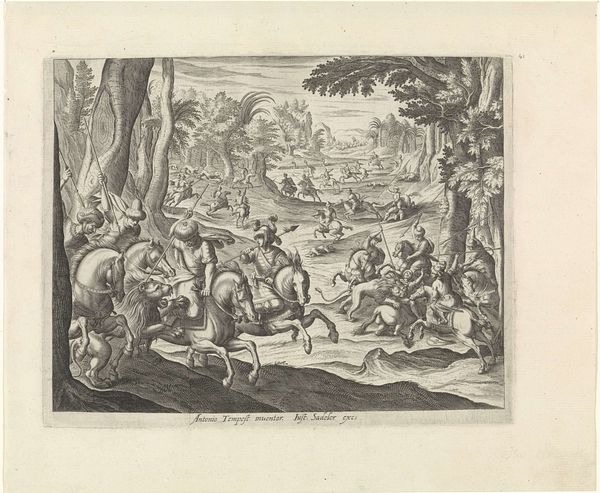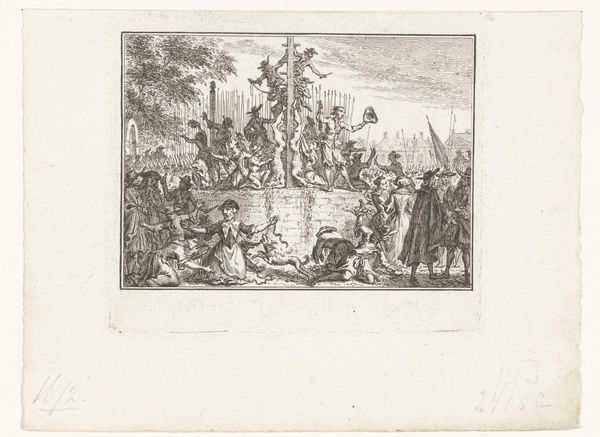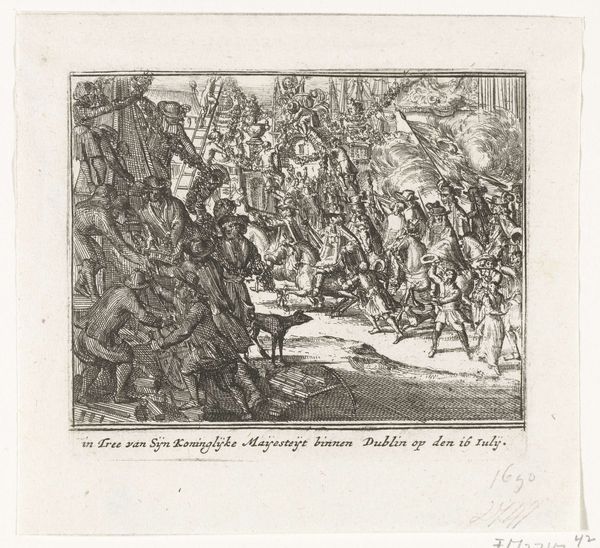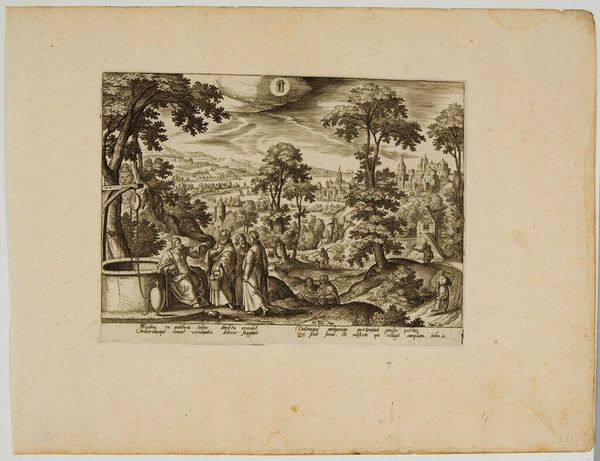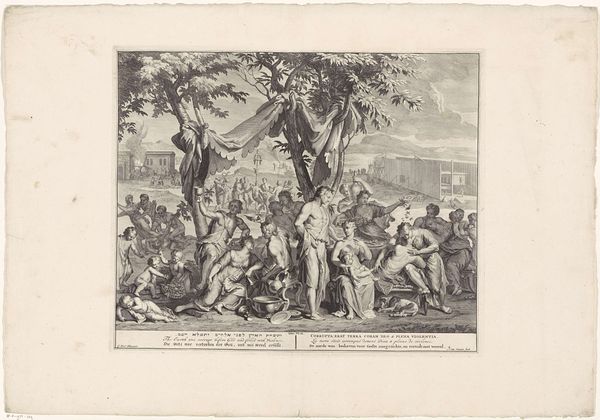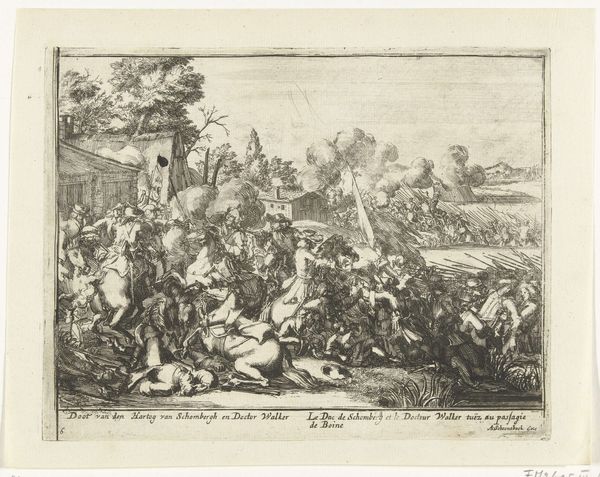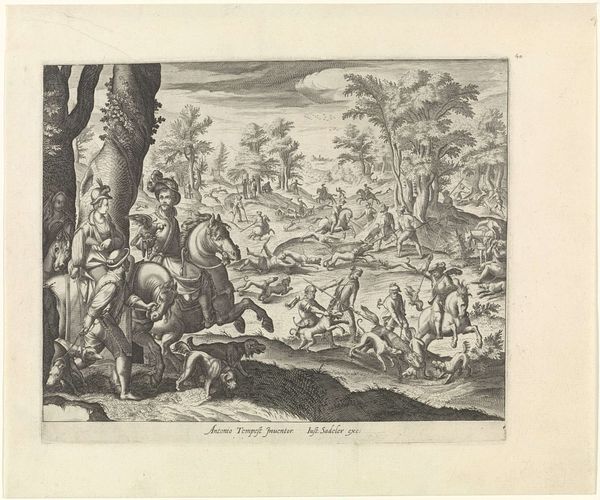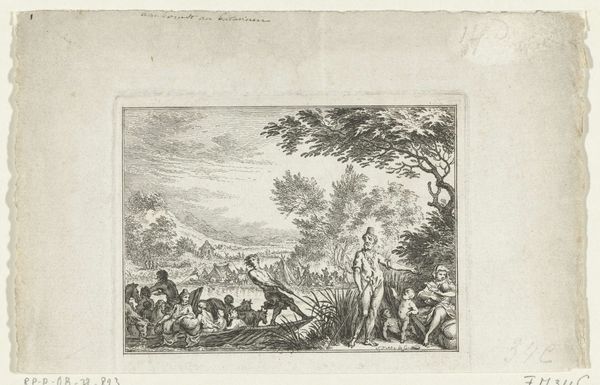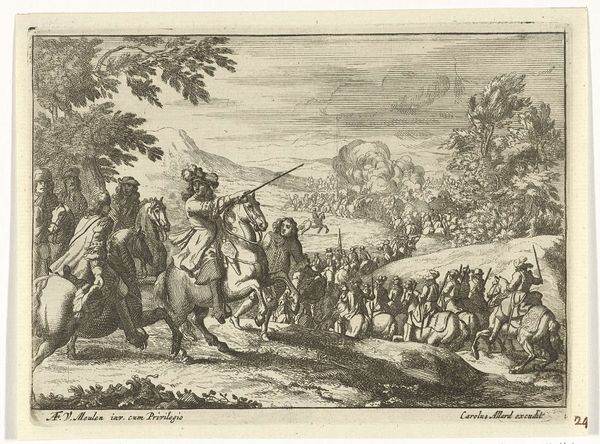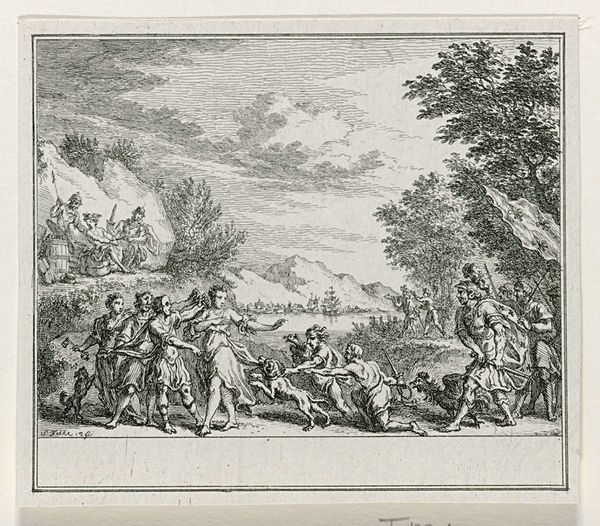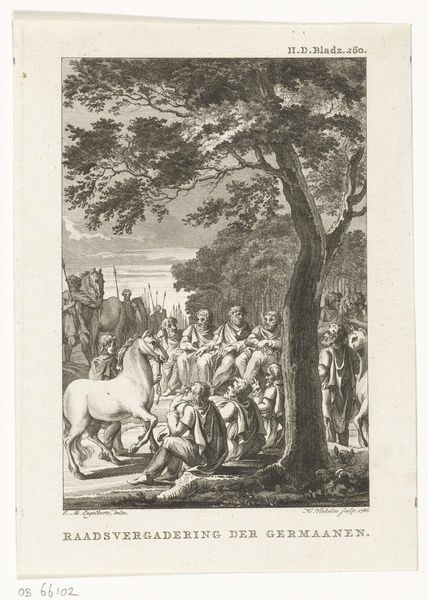
print, engraving
#
narrative-art
#
baroque
# print
#
landscape
#
figuration
#
history-painting
#
engraving
Dimensions: height 154 mm, width 195 mm
Copyright: Rijks Museum: Open Domain
Pieter Pickaert’s etching from 1689 depicts the ‘atrocities’ committed by King James II of England and the Comte d’Avaux in Ireland. It seeks to shape public opinion against James in the wake of the Glorious Revolution. The print uses visual codes of barbarity to depict James and his allies as cruel overlords of Ireland. The composition is divided, with James and his troops on horseback to the left and the victims of their cruelty to the right. The bodies hanging from the trees serve as a stark reminder of the consequences of opposing James’ regime. The people at the bottom of the trees appear to be begging for mercy and this underscores the helplessness of the Irish people against the English monarchy. This print appeared in the Dutch Republic, a place with a strong Protestant identity and a growing print culture. It's a powerful example of how images can be used as propaganda to influence political events. To understand the image better, it would be useful to research Dutch print culture and the political history of the Glorious Revolution. This helps us to understand art as something contingent on social and institutional context.
Comments
No comments
Be the first to comment and join the conversation on the ultimate creative platform.
